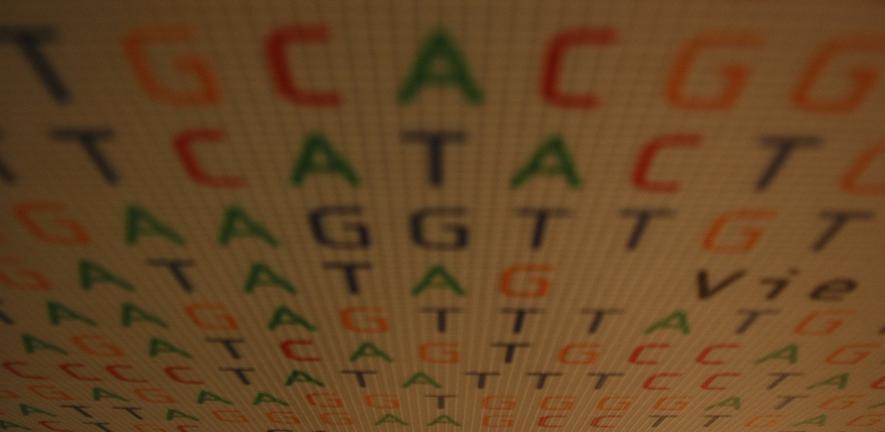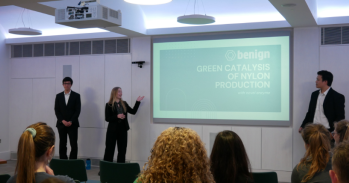
DNA from tissue biopsies taken from patients with Barrett’s oesophagus – a risk factor for oesophageal cancer – could show which patients are most likely to develop the disease eight years before diagnosis, suggests a study led by researchers at the University of Cambridge and EMBL’s European Bioinformatics Institute (EMBL-EBI).
DNA from tissue biopsies taken from patients with Barrett’s oesophagus – a risk factor for oesophageal cancer – could show which patients are most likely to develop the disease eight years before diagnosis, suggests a study led by researchers at the University of Cambridge and EMBL’s European Bioinformatics Institute (EMBL-EBI).
Our research shows the power of genomic medicine for the early detection of cancer
Sarah Killcoyne
Oesophageal cancer is often preceded by Barrett’s oesophagus, a condition in which cells within the lining of the oesophagus begin to change shape and can grow abnormally. The cellular changes are cause by acid and bile reflux – when the stomach juices come back up the gullet.
Barrett's oesophagus and oesophageal cancer are diagnosed using biopsies, which look for signs of dysplasia, the proliferation of abnormal cancer cells. Between one and five people in every 100 with Barrett's oesophagus will go on to develop oesophageal cancer in their life-time, but as this type of cancer can be difficult to treat, particularly if not caught early enough, researchers have been trying to identify ways to catch the disease early.
Professor Rebecca Fitzgerald from the MRC Cancer Unit at the University of Cambridge said: “Early diagnosis of cancer is one of the best strategies to improve patient survival and decrease the side-effects from treatments. However, this strategy can result in overtreatment – patients incorrectly identified as high-risk and given unnecessary treatments. We need to find new ways to accurately spot cancer progression at a very early stage to help us identify those patients at greatest risk.”
A phenomenon commonly seen in the DNA of tumours – but not in healthy tissues – is one whereby whole ‘chunks’ of DNA are either deleted or repeated several times as cells copy and multiply. These are known as ‘copy number alterations’. In a study published today in Nature Medicine, researchers at Cambridge have shown how these DNA ‘signals’ could help diagnose patients earlier.
The team used whole genome sequencing to analyse 777 samples from 88 patients and compared their DNA against that from control samples collected during clinical surveillance for Barrett's oesophagus. They were looking for differences in the DNA between the patients who were eventually diagnosed with cancer versus those who were not.
The researchers found that the genomes in samples from individual patients who went on to develop cancer tended to have a higher number of copy number alterations, and that the number and complexity of such alterations increased over time. They used this information to develop a statistical model that could predict whether a patient was at a high or low risk of cancer from a single, tiny biopsy sample taken years before. The model was then used to predict and classify risks for individuals in a validation cohort of 76 patients and 213 samples.
The model accurately predicted oesophageal cancer eight years before diagnosis for half of all patients who went on to develop the disease. This increased to more than three-quarters of patients one to two years before a diagnosis.
Equally importantly, the model accurately and consistently predicted patients who were at a low risk of developing cancer over many years of clinical surveillance. This meant that these patients did not need to be subjected to regular, invasive monitoring or treatment.
The researchers found a high degree of variability in copy number alternations even within a single biopsy, but even so, the model provided surprisingly stable predictions of a patient’s risk of progression to cancer.
Dr Sarah Killcoyne from the MRC Cancer Unit at the University of Cambridge and EMBL-EBI, joint first author, said: “Our research shows the power of genomic medicine for the early detection of cancer. We combined low-cost sequencing of standard tissue biopsies with statistical modelling to identify which patients were at greatest risk of progressing from Barrett’s oesophagus to oesophageal cancer.”
Eleanor Gregson from the MRC Cancer Unit, joint first author, added: “This new approach could allow us to intervene earlier, helping improve a patient’s outcome, while at the same time avoiding the need for low-risk individuals to have regular and invasive monitoring or even unnecessary treatment.”
The research was funded by the Medical Research Council and United European Gastroenterology, with support from the National Institute for Health Research Cambridge Biomedical Research Centre.
Reference
Killcoyne, S. et al. Genomic copy number predicts esophageal cancer years before transformation. Nat Med; 7 Sept 2020; DOI: 10.1038/s41591-020-1033-y

The text in this work is licensed under a Creative Commons Attribution 4.0 International License. Images, including our videos, are Copyright ©University of Cambridge and licensors/contributors as identified. All rights reserved. We make our image and video content available in a number of ways – as here, on our main website under its Terms and conditions, and on a range of channels including social media that permit your use and sharing of our content under their respective Terms.




